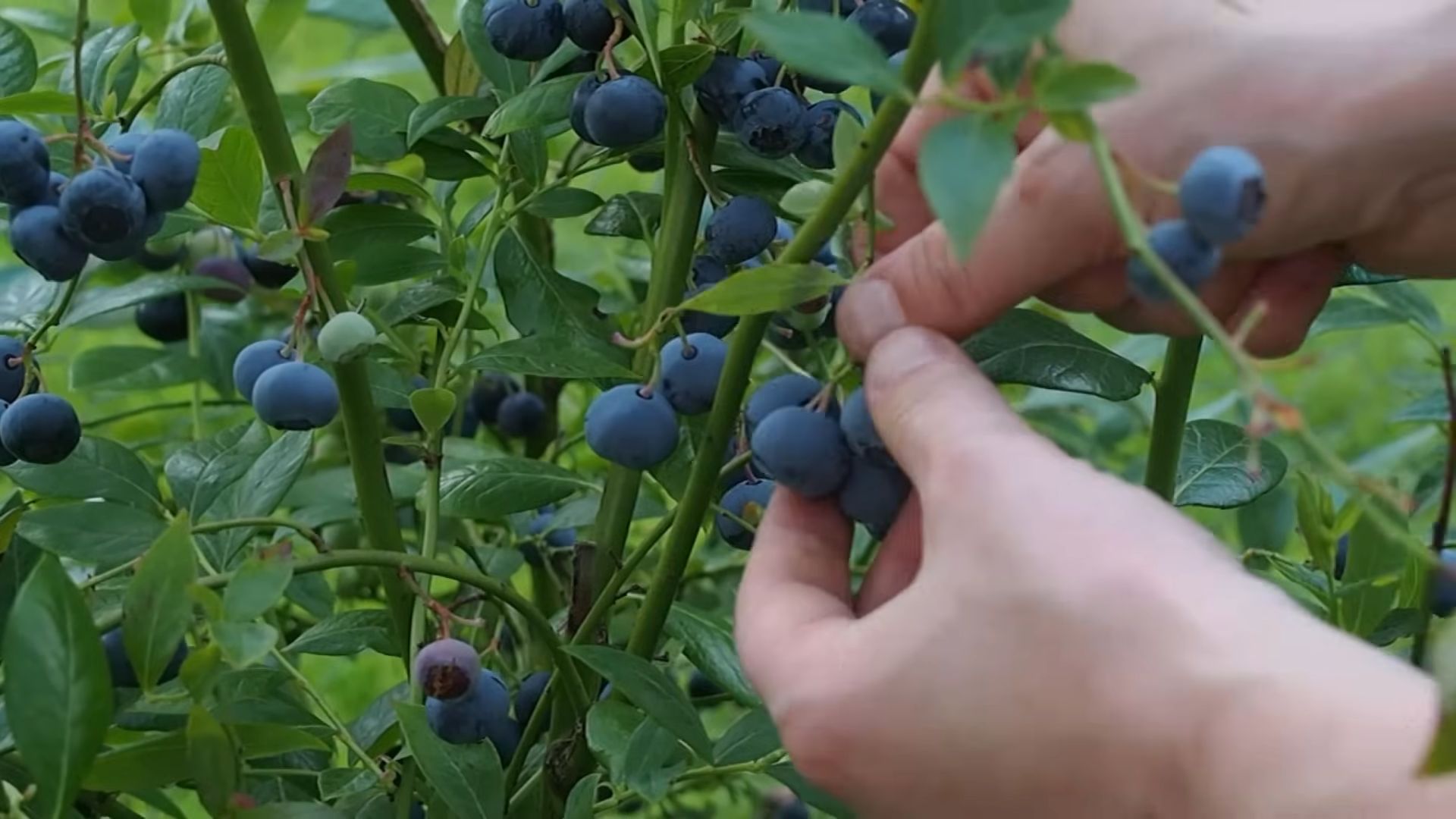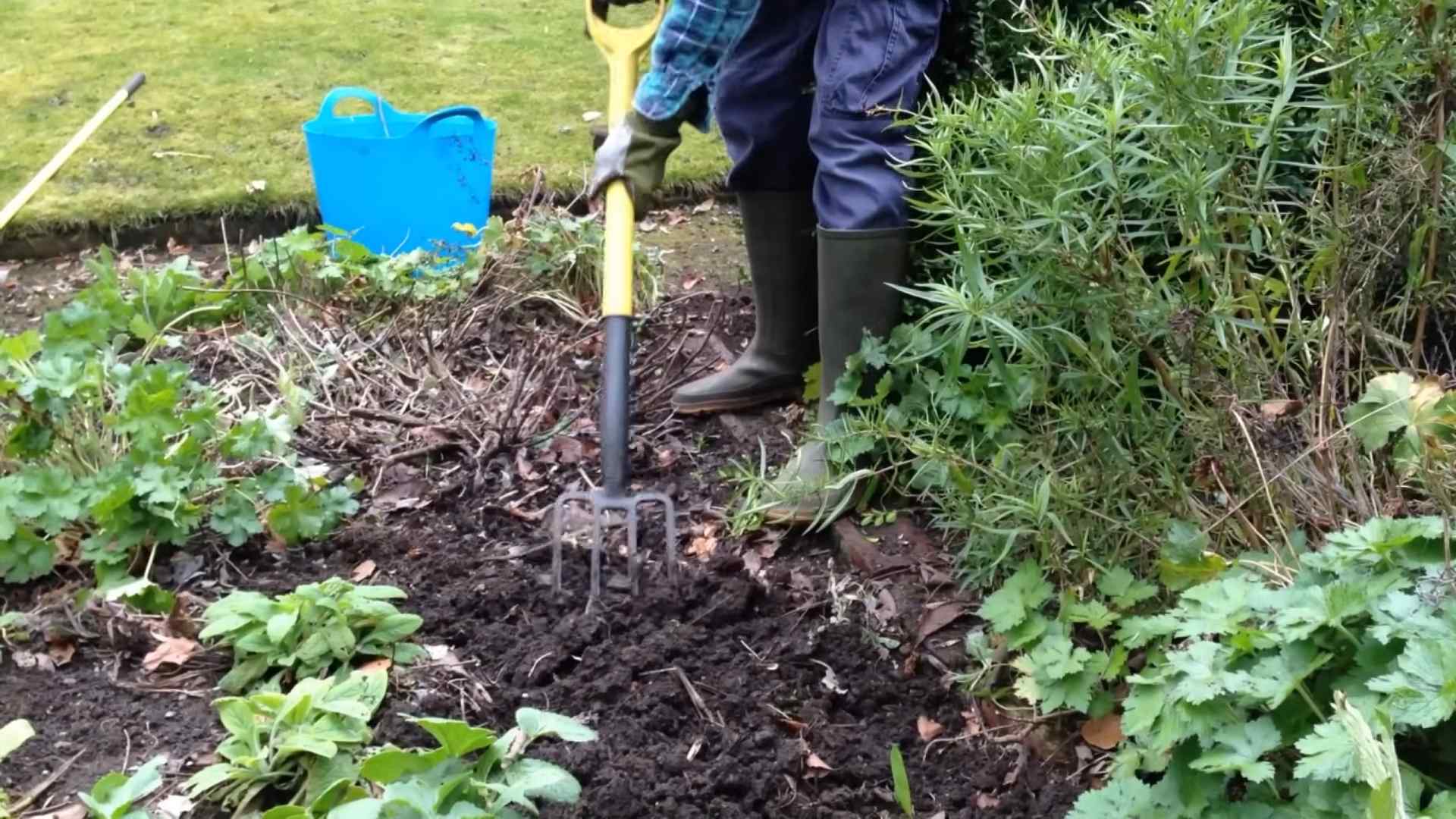Growing Blueberries at Home can seem like a daunting task, conjuring images of sprawling farms and specialized equipment. But what if I told you that cultivating these antioxidant-rich gems is entirely achievable, even in the smallest of spaces? Forget the grocery store prices and embrace the satisfaction of harvesting your own juicy blueberries right from your backyard!
Blueberries have a rich history, deeply intertwined with Native American cultures who not only consumed them as a vital food source but also used them for medicinal purposes. Passed down through generations, knowledge of blueberry cultivation has evolved, making it easier than ever for us to enjoy these delicious berries.
In today’s fast-paced world, knowing how to grow your own food, especially something as nutritious as blueberries, offers a sense of self-sufficiency and connection to nature. Plus, let’s be honest, who wouldn’t want a constant supply of fresh blueberries for smoothies, muffins, or just a healthy snack? This DIY guide will equip you with simple yet effective tricks and hacks to successfully growing blueberries at home, regardless of your gardening experience. Get ready to transform your space into a blueberry haven!

Growing Blueberries at Home: A DIY Guide to Berry Bliss
Hey there, fellow garden enthusiasts! I’m so excited to share my experience and knowledge on growing blueberries right in your own backyard. Trust me, there’s nothing quite like the taste of freshly picked, sun-ripened blueberries. It’s a rewarding experience, and with a little patience and the right approach, you can enjoy a bountiful harvest year after year. Let’s dive in!
Choosing the Right Blueberry Variety
Before you even think about digging a hole, you need to choose the right blueberry variety for your climate. Blueberries are categorized into a few main types:
* Highbush: These are the most common type, and they’re further divided into Northern and Southern Highbush. Northern Highbush varieties are cold-hardy and ideal for cooler climates, while Southern Highbush varieties are better suited for warmer regions.
* Lowbush: These are smaller, wild blueberries that are extremely cold-hardy. They’re great for ground cover and can tolerate poor soil.
* Rabbiteye: This type is native to the southeastern United States and is known for its vigorous growth and tolerance of warmer temperatures. They also require cross-pollination, so you’ll need to plant at least two different Rabbiteye varieties.
* Half-High: As the name suggests, these are a cross between Highbush and Lowbush varieties, offering a good balance of size and cold-hardiness.
Here’s what I recommend considering when choosing your variety:
* Your Climate: This is the most important factor. Check your local hardiness zone to ensure the variety you choose can survive your winters.
* Chill Hours: Blueberries need a certain number of “chill hours” (hours below 45°F) to properly set fruit. Make sure the variety you choose meets the chill hour requirements of your area.
* Size: Consider how much space you have available. Highbush varieties can grow quite large, while Lowbush varieties stay relatively small.
* Taste: Some varieties are sweeter than others. Do some research to find a variety that suits your taste preferences.
* Pollination: While some blueberry varieties are self-pollinating, they generally produce more fruit when cross-pollinated with another variety of the same type.
Preparing the Soil: Acidity is Key!
Blueberries are acid-loving plants, meaning they thrive in soil with a pH between 4.5 and 5.5. This is crucial for their health and fruit production. Most garden soils are not acidic enough, so you’ll need to amend the soil before planting.
Here’s how I prepare my soil for blueberries:
1. Test Your Soil: Use a soil testing kit to determine the pH of your soil. You can find these kits at most garden centers.
2. Amend the Soil: If your soil pH is too high (above 5.5), you’ll need to lower it. Here are a few ways to do that:
* Sulfur: This is the most effective way to lower soil pH. Follow the instructions on the package carefully, as too much sulfur can be harmful to plants. I usually use elemental sulfur and work it into the soil several months before planting.
* Sphagnum Peat Moss: This is a great amendment for blueberries because it’s acidic and helps retain moisture. Mix it generously into the soil.
* Pine Bark Fines: These are another good amendment for blueberries. They help improve drainage and add acidity to the soil.
* Acidifying Fertilizer: Use a fertilizer specifically formulated for acid-loving plants, such as azaleas or rhododendrons.
3. Improve Drainage: Blueberries need well-drained soil. If your soil is heavy clay, amend it with plenty of organic matter, such as compost or peat moss, to improve drainage.
4. Create a Raised Bed (Optional): If you have poor drainage or heavy clay soil, consider planting your blueberries in a raised bed. This will help improve drainage and provide a better growing environment.
Planting Your Blueberry Bushes
Now that you’ve chosen your variety and prepared the soil, it’s time to plant your blueberry bushes!
Here’s my step-by-step guide to planting blueberries:
1. Choose a Sunny Location: Blueberries need at least six hours of sunlight per day.
2. Dig a Hole: Dig a hole that’s twice as wide and as deep as the root ball of your blueberry bush.
3. Amend the Soil in the Hole: Mix some peat moss and pine bark fines into the soil you removed from the hole.
4. Remove the Blueberry Bush from its Container: Gently loosen the roots of the blueberry bush before planting. If the roots are circling the pot, gently break them up to encourage them to grow outward.
5. Place the Blueberry Bush in the Hole: Position the blueberry bush in the hole so that the top of the root ball is level with the surrounding soil.
6. Fill the Hole: Fill the hole with the amended soil, gently tamping it down around the roots.
7. Water Thoroughly: Water the blueberry bush thoroughly after planting.
8. Mulch: Apply a layer of mulch around the base of the blueberry bush to help retain moisture, suppress weeds, and regulate soil temperature. I like to use pine straw or wood chips.
Caring for Your Blueberry Bushes
Once your blueberry bushes are planted, it’s important to provide them with proper care to ensure they thrive and produce a bountiful harvest.
Here’s what I do to care for my blueberry bushes:
1. Watering: Blueberries need consistent moisture, especially during the growing season. Water deeply and regularly, especially during dry spells. Avoid overwatering, as this can lead to root rot.
2. Fertilizing: Fertilize your blueberry bushes in the spring with an acid-loving fertilizer. Follow the instructions on the package carefully. Avoid over-fertilizing, as this can damage the plants.
3. Pruning: Pruning is essential for maintaining the health and productivity of your blueberry bushes. Prune in late winter or early spring, before new growth begins. Remove any dead, damaged, or crossing branches. Also, prune out some of the older, less productive canes to encourage new growth.
4. Weed Control: Keep the area around your blueberry bushes free of weeds. Weeds can compete with the blueberry bushes for nutrients and water.
5. Pest and Disease Control: Blueberries can be susceptible to a few pests and diseases. Monitor your plants regularly and take action if you notice any problems. Common pests include aphids, blueberry maggots, and Japanese beetles. Common diseases include blueberry leaf spot and mummy berry.
6. Protect from Birds: Birds love blueberries just as much as we do! To protect your crop, you may need to cover your blueberry bushes with netting.
Harvesting Your Blueberries
The moment you’ve been waiting for! Harvesting your own blueberries is incredibly rewarding.
Here’s how I harvest my blueberries:
1. Wait for the Berries to Ripen: Blueberries are ripe when they are a deep blue color and easily detach from the bush.
2. Gently Pick the Berries: Gently pick the ripe blueberries, being careful not to damage the plant.
3. Store the Berries: Store the harvested blueberries in the refrigerator. They will keep for about a week.
Troubleshooting Common Blueberry Problems
Even with the best care, you may encounter some problems when growing blueberries. Here are a few common issues and how to address them:
* Yellowing Leaves: This can be a sign of nutrient deficiency, especially iron deficiency. Check your soil pH and amend the soil if necessary. You can also apply an iron chelate supplement.
* Poor Fruit Set: This can be caused by a lack of pollination, cold weather during bloom, or nutrient deficiency. Ensure you have at least two different varieties for cross-pollination. Protect your plants from frost during bloom. Fertilize your plants in the spring.
* Small Berries: This can be caused by a lack of water, nutrient deficiency, or over-cropping. Water your plants regularly, especially during dry spells. Fertilize your plants in the spring. Prune your plants to remove some of the fruit load.
* Root Rot: This is caused by overwatering or poor drainage. Ensure your soil is well-drained. Avoid overwatering.
Propagating Blueberries (Optional)
If you’re feeling adventurous, you can propagate your own blueberry bushes from cuttings. This is a great way to expand your blueberry patch without having to buy new plants.
Here’s how I propagate blueberries from cuttings:
1. Take Cuttings: In late winter or early spring, take cuttings from healthy, one-year-old growth. The cuttings should be about 4-6 inches

Conclusion
So, there you have it! Growing blueberries at home might seem daunting at first, but with a little preparation and the right knowledge, you can enjoy a bountiful harvest of these antioxidant-rich berries right in your own backyard. This DIY approach not only saves you money compared to buying them at the store, but it also gives you complete control over the growing process, ensuring you’re consuming the freshest, most organically grown blueberries possible.
Why is this a must-try? Because nothing beats the taste of homegrown blueberries, bursting with flavor and packed with nutrients. Plus, the satisfaction of nurturing a plant from a small bush to a thriving producer is incredibly rewarding. Imagine stepping outside on a warm summer morning and picking a handful of juicy blueberries straight from your own garden – a truly delightful experience!
But the benefits don’t stop there. Growing your own blueberries is also an environmentally friendly choice. You’re reducing your carbon footprint by eliminating the need for transportation and packaging associated with store-bought berries. You’re also contributing to a healthier ecosystem by providing a habitat for pollinators like bees and butterflies.
Looking for variations? Consider planting different varieties of blueberries to extend your harvest season. Early-season varieties like ‘Duke’ will provide berries in early summer, while late-season varieties like ‘Elliott’ will keep you picking well into August. You can also experiment with growing blueberries in containers, which is a great option if you have limited space or poor soil conditions. Just be sure to choose a large container and use an acidic potting mix specifically formulated for blueberries. Another fun variation is to incorporate companion planting. Marigolds can help deter pests, while herbs like basil can improve the overall health of your blueberry bushes.
Don’t be afraid to experiment and find what works best for you and your local climate. The key to successful growing blueberries at home is patience, observation, and a willingness to learn. Pay attention to your plants, monitor their growth, and adjust your care as needed.
We wholeheartedly encourage you to give this DIY trick a try. It’s a rewarding and delicious way to connect with nature and enjoy the fruits (literally!) of your labor. Once you’ve harvested your first batch of homegrown blueberries, we’d love to hear about your experience! Share your tips, tricks, and photos in the comments below. Let’s build a community of blueberry enthusiasts and help each other succeed in growing these amazing berries at home. Happy growing!
Frequently Asked Questions (FAQ)
What type of soil is best for growing blueberries?
Blueberries are acid-loving plants, meaning they thrive in soil with a pH between 4.5 and 5.5. Most garden soils are not acidic enough, so you’ll need to amend the soil before planting. You can do this by adding peat moss, sulfur, or an acidic fertilizer specifically formulated for blueberries. A soil test is highly recommended to determine your soil’s pH and nutrient levels. You can purchase a soil testing kit at most garden centers or send a sample to your local agricultural extension office.
How much sunlight do blueberries need?
Blueberries need at least six hours of direct sunlight per day to produce a good crop of berries. Choose a planting location that receives full sun, especially in the morning. Afternoon shade can be beneficial in hot climates to prevent the plants from overheating. Insufficient sunlight can lead to reduced berry production and smaller, less flavorful berries.
How often should I water my blueberry bushes?
Blueberries need consistent moisture, especially during the growing season. Water deeply and regularly, especially during dry spells. Aim to keep the soil consistently moist but not waterlogged. A good rule of thumb is to water when the top inch of soil feels dry to the touch. Mulching around the base of the plants with organic materials like wood chips or pine needles can help retain moisture and suppress weeds.
When is the best time to plant blueberry bushes?
The best time to plant blueberry bushes is in the early spring or late fall, when the plants are dormant. This gives them time to establish their roots before the heat of summer or the cold of winter. If you live in a warmer climate, you can plant blueberries in the winter as long as the ground is not frozen. When planting, dig a hole that is twice as wide as the root ball and just as deep. Gently loosen the roots before planting and backfill with amended soil.
What kind of fertilizer should I use for blueberries?
Use an acidic fertilizer specifically formulated for blueberries, azaleas, or rhododendrons. These fertilizers contain ammonium sulfate or sulfur-coated urea, which helps to lower the soil pH. Fertilize in the early spring, just before the plants begin to grow. Follow the instructions on the fertilizer package carefully to avoid over-fertilizing, which can damage the plants. Avoid using fertilizers that contain nitrates, as these can raise the soil pH.
How do I protect my blueberries from birds?
Birds love blueberries just as much as we do! To protect your crop, you’ll need to take measures to deter them. The most effective method is to cover your blueberry bushes with netting. Be sure to choose a netting with small enough holes to prevent birds from getting through. You can also use bird scare devices, such as reflective tape or plastic owls, but these are often less effective than netting.
How do I prune my blueberry bushes?
Pruning is essential for maintaining the health and productivity of your blueberry bushes. Prune in late winter or early spring, before the plants begin to grow. Remove any dead, damaged, or diseased branches. Also, remove any low-growing branches that are touching the ground. For young plants, focus on shaping the bush and encouraging strong growth. For mature plants, remove some of the older, less productive canes to encourage new growth.
How long does it take for blueberry bushes to produce fruit?
Most blueberry bushes will start producing fruit within one to two years of planting, but it may take three to five years for them to reach their full production potential. Be patient and continue to care for your plants, and you’ll be rewarded with a bountiful harvest in the years to come.
Can I grow blueberries in containers?
Yes, you can successfully grow blueberries in containers, which is a great option if you have limited space or poor soil conditions. Choose a large container, at least 15-20 gallons in size, with good drainage. Use an acidic potting mix specifically formulated for blueberries. Water regularly and fertilize with an acidic fertilizer. Container-grown blueberries may need to be watered more frequently than those grown in the ground, especially during hot weather.
What are some common pests and diseases that affect blueberries?
Some common pests that affect blueberries include aphids, spider mites, and blueberry maggots. Diseases include fungal diseases like powdery mildew and botrytis blight. Monitor your plants regularly for signs of pests or diseases and take action promptly to prevent them from spreading. Organic pest control methods, such as insecticidal soap or neem oil, can be effective for controlling many pests. For diseases, ensure good air circulation and avoid overhead watering. If necessary, use a fungicide specifically labeled for use on blueberries.




Leave a Comment